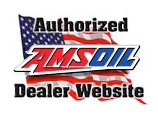01 Jan Snowblower Maintenance 101
Keeping your snowblower in good running condition can save you money on repair and/or replacement costs. The following are some maintenance and troubleshooting tips for your snowblower.
Snowblower Maintenance 101
Always keep your snowblower in a dry, clean, and well-ventilated location. This will help to avoid rust and corrosion. If you choose to store your snow blower outside, make sure it is under some sort of shelter. This will help to protect it from the elements, such as rain, snow, and wind. If you have a gas-powered snowblower, you’ll want to make sure you check the oil regularly and keep it filled up.
When to Replace the Engine Oil on your Snowblower
You’ll want to change the oil in your snowblower when it starts to look dark, dirty, or burnt. You can do this by checking the dipstick level and making sure it’s between the red and yellow lines. If the oil is dark or burnt, it’s time to put on a fresh batch. Always use AMSOIL synthetic oil products for your snowblower.
What to Do If Your Snowblower Isn’t Starting
If your snowblower won’t start, the problem could be the fuel. You can check the fuel lines, the carburetor, and the spark plug. Be sure to clean the spark plug by spraying it with a little bit of gas and then drying it off. If you find it’s clogged, replace it. If you’re still having trouble starting your snowblower, you might want to contact a professional.
When to Replace the Spark Plug on Your Snowblower
A spark plug is used to ignite the gas and air mixture in the cylinder of your snowblower. It’s important to change the spark plug before it goes bad. It’s recommended you change it every 30 hours, or once a year.
How to Maintain Your Snowblower’s Drive Belt
It’s important to regularly check the snowblower’s drive belt to make sure it’s not frayed or cracked. This will allow you to spot any issues with the belt before they become a problem. If the belt is damaged, it’s best to replace it immediately.
General Things You Should Do When Using Your Snowblower
Always be sure to clear any obstruction that might be in the snowblower’s path, such as stones or sticks. You’ll also want to make sure the auger is clear of snow and ice. If you’re using a snowblower that has a discharge chute, make sure the chute is cleared as well.
What You Should Never Do with Your Snowblower
Avoid using your snowblower on a hard surface, such as a concrete sidewalk or asphalt. You also want to avoid using your snowblower on a steep pitch.
Tips for After You Use Your Snowblower
After you’re done using your snowblower, you should give it a quick once-over to make sure it’s not leaking. If you find any lubricating fluid on the snowblower, remove it. You should also keep a bucket of clean water nearby so you can wash the snow off of the undercarriage of the snowblower.
Contact Dave Consalvo to learn how AMSOIL’s products can benefit all of your vehicles.

